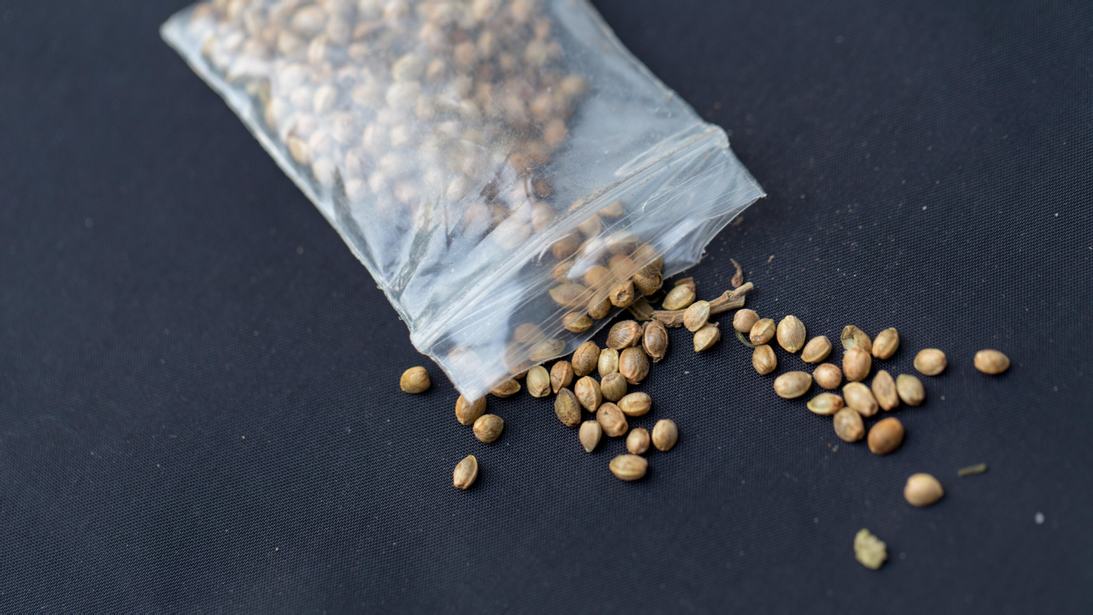How to Select Quality Cannabis Seeds
Here's some tips to start growing.

While there’s certainly no shortage of cannabis in many of the legal states, there’s always been a tried-and-true subset of consumers that prefer to grow their own. After all, in most areas of the country, home brewers can make their own beer at home — even the Obama White House posted its own Honey Ale recipe back in 2012. And everyone can grow their own tobacco, so as of the time of this writing, 19 states will also allow you to grow a handful of plants — often six mature plants, but as low as three and as many as 12 (In case you’re wondering if it’s where you live, the current tally is Alaska, Arizona, California, Colorado, Connecticut, Illinois, Maine, Massachusetts, Michigan, Montana, Nevada, New Mexico, New York, Oklahoma, Oregon, Rhode Island, Vermont, Washington, Wisconsin and Washington, DC.). Laws and regulations are subject to change at any time, so be sure to check the laws and regs in your state and local areas before getting started.
And if you are going to start growing your own, the best place to start is usually seeds, unless you know a grower that will give you a cutting from their plants. This process is called cloning, and this often means keeping a mother plant alive so you can continually plant after harvesting. Seeds, on the other hand, can last for a few months after they are first germinated if refrigerated, depending on their genetics (though to be on the safe side, they should be put into whatever growing process you prefer sooner rather than later.). Plus, seeds are less likely to carry pests or molds that can doom your crop before you even begin. And while they often take longer to germinate and grow versus cuttings, you have far greater variety available, which is important if you’re just starting out.
But where do I begin? And how do I determine which of my seeds are the likeliest winners? To learn more, read on…
Getting the Seeds
Depending on where you live, you may be able to get seeds from your local dispensary. Seed banks abound online, and luckily, ever since hemp was legalized through the 2018 Farm Act, certain cannabis seeds are not controlled, per the DEA’s determination, if they contain less than 0.3% THC. It might make sense, if you have a preference, to reach out through your local network to locate the sorts of genetics that you prefer. Particularly helpful in this regard are consumer advocacy groups such as NORML.
The main thing to keep in mind is genetics — that’s the family tree from which your seed springs. Some growers or seed banks can fill you in on this information, and you’ll definitely need it, because the better and stronger the genetics, the more viable the seed will be when it’s planted. Another source for genetics is our strain guide, which breaks down the lineage of many well-loved strains.
The Many Different Types of Seeds
Three different types exist in the market: feminized, regular and autoflower. As you may know, female plants contain the medicinal/adult-use cannabinoids you seek, so most will go with feminized seeds. With regular seeds, it’s a crapshoot, and you won’t know which are male and which are female until you grow them. However, some growers will keep males around to occasionally pollinate a female plant. Seeds, as a general rule, tend to possess stronger genetics than clones, so careful sexing of your plants make sense if down the road you choose seeds as your preferred germination medium.
Autoflowers, on the other hand, have more to do with the photoperiod of cannabis. Cannabis generally needs 18 hours of sunlight and six hours of darkness, which makes it a highly seasonal crop when grown outdoors. Autoflowers are guaranteed to bud within two to three months usually, which makes them ideal for growing in areas like Alaska or for novice growers. However, the tradeoff is usually less potent bud.
Determining a Healthy Seed
Once you’ve got your seeds, it’s time to explore them for their overall health. And while seeds come in all general shapes and sizes, they will generally be some shade of brown if they’re at all healthy. Similarly, the healthiest seeds will also have a teardrop shape to them. Green seeds, or seeds that are flat, most likely won’t grow very well.
You’ll also want to check your seed for hardiness by giving them a squeeze. This is particularly good for determining if they’re older. Newer seeds will be quite tough, even if the shell is somewhat thin. Conversely, older seeds will start to give a bit as they grow older.
Many growers rely on the “float test” to determine if their seeds are viable. In this test, the seeds are thrown into water. After a period of two hours, the conventional thinking is that sinkers are generally viable; floaters aren’t. However, floaters can sink over time, especially if they have hard shells, so you have to give it time before you pass or fail specific seeds. (You WILL want to plant these seeds right away after you do this.)
The ultimate determinant, however, is growing the seeds you have, and seeing which grow. There will always be a few which won’t germinate, or which turn out to be male, or will sputter out, so you’ll definitely need to plant a few more to see which survive, especially if you’re just starting out.
